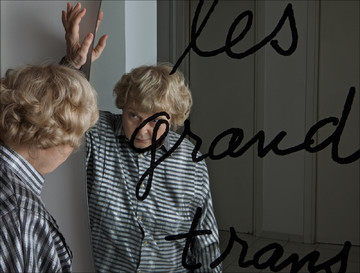Tomaso Binga

ph. Dino Ignani
Tomaso Binga (b. Salerno, 1931) is an Italian artist and poet based in Rome since the 1960s. Adopting a male pseudonym to challenge male privilege with irony and displacement, she is a central figure in Italian phonetic-sound-performance poetry and a pioneer of verbal-visual writing.
Since 1971, her work has revolved around the idea of art as writing, expressed through collage, typewriting, painting, and performance. Strongly influenced by her father, who introduced her to both painting and poetry, Binga’s artistic and poetic production have always been deeply intertwined.
Her life and career are marked by key encounters—most notably with art critic Filiberto Menna, whom she married in 1959. In Rome, she founded Lavatoio Contumaciale, a space for cultural exchange and interdisciplinary experimentation.
While feminist commitment is central to her work, Binga engages broadly with human rights, gender equality, freedom, and peace. Her use of irony often reveals deeper critiques of social and political injustice, as in the 1972 performance “Vista Zero”, a powerful metaphor for media-induced blindness.
From early object-images made with recycled polystyrene to collaborations like “Alfabeto Murale” with Verita Monselles, and long-standing exchanges with artists such as Lamberto Pignotti and Giovanni Fontana, her work bridges poetry, performance, and visual art.
In recent years, she developed new visual languages—from asementic writing to “Typecode” and the ongoing “Alphasymbol” series (2020–), some of which featured in the Biennale di Venezia (Il Latte dei Sogni / The Milk of Dreams), curated by Cecilia Alemani).
With a fifty-year career, Binga’s major works like “I Write You Only on Sundays” (1977) and “Diario Romano” (1995) affirm her unique ability to make the word a sign that resonates across space and time.
Damir Očko
ph. Maja Bosnic
Damir Očko (b. Zagreb, 1977) is a Croatian multidisciplinary artist whose practice encompasses film, video, poetry, collage, sound, and performance. Educated at the Academy of Fine Arts in Zagreb, Očko’s work is deeply engaged with the human body, exploring it as a political and social entity subjected to control, vulnerability, and resistance. His artistic language challenges conventional representations of the body, focusing on its fragility and resilience within complex power dynamics.
Since the early stages of his career, Očko has established himself as a significant voice in contemporary art, exhibiting widely across Europe, North America, and beyond. His solo exhibitions have been hosted by leading institutions such as Kunsthalle Krems in Austria, the Museum of Contemporary Art Zagreb, Jeu de Paume and Palais de Tokyo in Paris, the National Gallery in Prague, Museo Amparo in Mexico City, DAZIBAO in Montreal, Künstlerhaus KM–Halle für Kunst und Medien in Graz, Kunsthalle Düsseldorf, Temple Bar Gallery and Studios in Dublin, and Kunstverein Leipzig, among others. These exhibitions often showcase his interdisciplinary approach, combining moving images, poetic text, and sculptural elements to create immersive experiences that invite viewers to engage critically with themes of bodily autonomy and social constraints.
Očko has also been an active participant in numerous international group exhibitions, collaborating with prestigious venues such as OFF Biennale Budapest, MUDAM Luxembourg, FRAC Le Plateau in Paris, Württembergischer Kunstverein Stuttgart, Kunsthalle Wien, and the Fondation Louis Vuitton. These collaborations have allowed him to expand his dialogue with global audiences and fellow artists, enriching his practice with diverse perspectives.
A landmark moment in Očko’s career was his representation of Croatia at the 56th Venice Biennale in 2015 with the solo project Studies on Shivering: The Third Degree. This exhibition combined film and poetry to investigate the metaphor of “shivering” — the involuntary bodily response to trauma and vulnerability — as a powerful symbol for physical and political suffering. The project included two major films, TK (2014) and The Third Degree (2015), and incorporated elements such as microtonal soundscapes, mirror installations, and performative gestures, emphasizing the intersection of sensory experience and socio-political commentary.
Očko’s work is included in numerous important public and private collections, notably Fondation Louis Vuitton in Paris, FRAC Le Plateau, and CNAP (Centre National des Arts Plastiques). These acquisitions reflect the growing recognition of his contribution to contemporary art and his innovative approach to exploring the body as a site of poetic and political inquiry.
Throughout his career, Damir Očko has continued to push the boundaries of artistic expression, blending poetic language with visual and performative forms. His practice invites audiences to contemplate the tensions between strength and fragility, control and freedom, silence and expression. By foregrounding the corporeal as a site of political discourse, Očko’s art challenges us to rethink the ways in which bodies are regulated, perceived, and lived within contemporary society.

